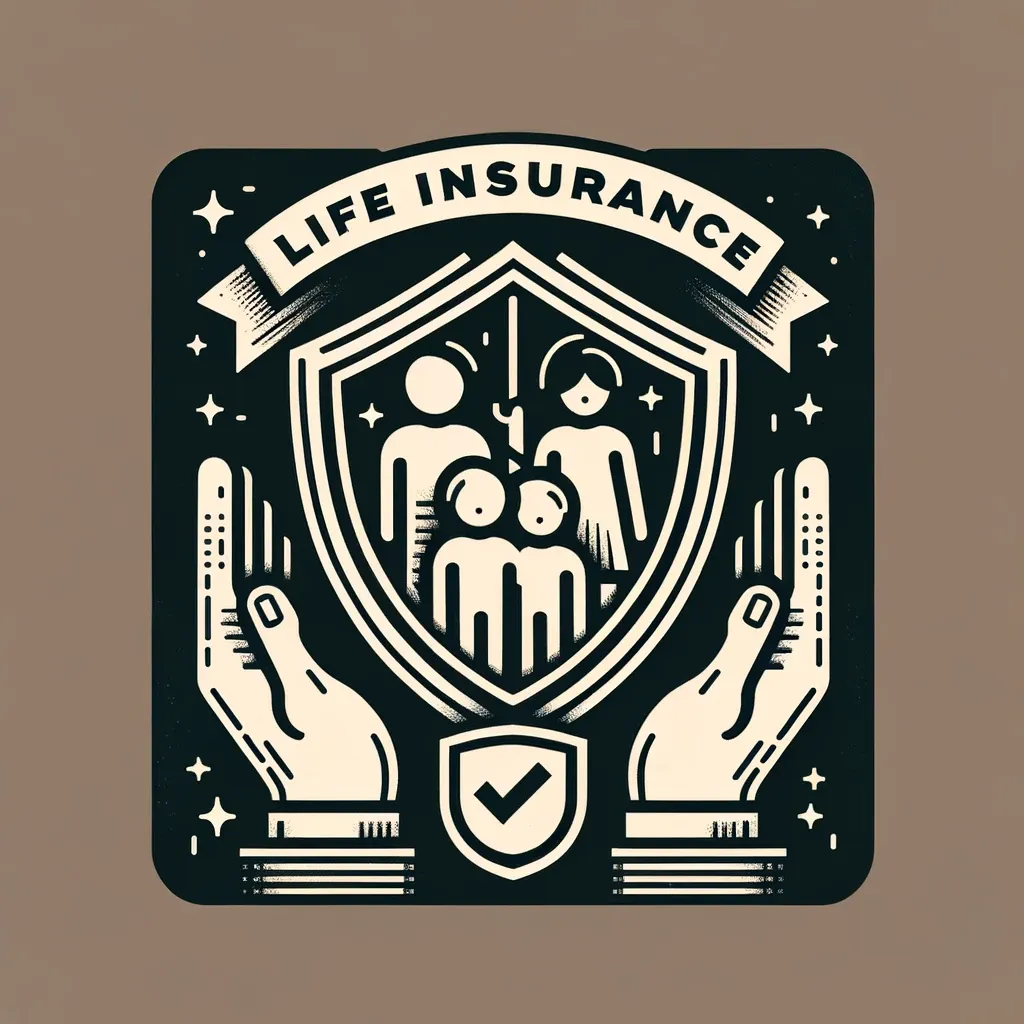Life cover, also known as life insurance, is a financial product that provides a sum of money to the designated beneficiaries upon the death of the insured person. Its primary purpose is to offer financial security and support to the insured's dependents, ensuring they are protected from financial hardship in case of the insured's untimely demise.
Investor Central is a reader-supported publication. To receive new posts and support my work, consider becoming a free or paid subscriber.
Lets Start With Why:
- Financial Security for Family: Provides a safety net for your dependents, ensuring they can maintain their standard of living if you're no longer there to provide for them.
- Lost Income Protection: Replaces lost income, helping your family cover day-to-day expenses and maintain their lifestyle without financial hardship.
- Debt and Mortgage Coverage: Helps in settling outstanding debts, including mortgages, so your family isn’t burdened by them after your passing.
- Funding Children’s Education: Ensures that funds are available for your children’s education, safeguarding their future opportunities.
- Peace of Mind: Offers you the comfort of knowing that your loved ones will be financially taken care of in your absence.
Three major Schemes that you should know:
Unit-Linked Insurance Plans (ULIPs):
ULIPs are a type of life insurance product that combines life cover with investment. A portion of the premiums paid goes towards life insurance coverage, while the remaining is invested in various market-linked instruments such as stocks and bonds. This allows policyholders the potential to earn market-linked returns. However, the returns are subject to market risks and can vary based on the performance of the underlying investments.
Endowment Policies Or Savings Linked Insurance Plans:
Endowment policies are a mix of insurance and savings. These policies provide life cover and also act as a saving instrument. They are designed to pay out a lump sum amount either upon the maturity of the policy or upon the death of the policyholder, whichever comes first. Endowment policies are typically lower risk compared to ULIPs, as the savings component is managed more conservatively, aiming to provide steady, though often modest, returns.
Pure Life Cover (Term Insurance):
Pure life cover, commonly known as term insurance, is the most straightforward form of life insurance. It offers life cover without any investment or savings component. The primary feature of term insurance is to provide a significant life cover at a relatively lower premium cost. It does not offer any maturity benefits, meaning if the policyholder survives the policy term, no payout is provided. This type of insurance is purely for protection, focusing solely on offering financial security to the policyholder's dependents in case of their untimely demise.
Why Pure Life over Others:
Pure life insurance policies typically have lower premiums compared to ULIPs and endowment policies.
For example, consider a 30-year-old individual opting for a term insurance policy with a cover of 1Cr. The annual premium might be around 8000, Whereas endowment policies / ULIPs could cost you 4x - 8x depending on the plan.
So investors could invest the amount saved in premiums from not choosing a more expensive ULIP or endowment policy in the stock market, Real estate, gold or any other forms of investments. Over time, these investments could potentially yield higher returns due to their market-linked nature.
Investing separately in the other investments allows for more flexibility and potentially higher returns and diversification. The stock market, historically, has provided substantial returns over the long term, often outpacing inflation. Gold, on the other hand, is seen as a hedge against inflation and economic uncertainty.
By choosing pure life insurance, you pay a lower premium for the life cover and can independently invest the savings in these assets, tailoring your investment strategy to your risk tolerance and financial goals.
What supports our opinion:
Premium Cost:
By conducting a detailed comparison of the premium rates across various pure life, ULIP, and endowment plans, it becomes readily apparent that pure life insurance policies typically offer the most affordable premium options among these three categories. This clear disparity in premium costs underscores the cost-effectiveness of pure life insurance in comparison to its counterparts.
Returns:
Endowment policies, characterized by their fixed returns, have historically demonstrated an inability to outpace inflation upon maturity. This consistent underperformance relative to inflation makes them a less favorable option for individuals seeking value appreciation of their investments over time.
In the case of Unit-Linked Insurance Plans (ULIPs), while they offer the advantage of investing in the stock market, there is often a lack of transparency regarding the allocation of premiums between life cover and investment. Additionally, ULIPs are known to incur higher portfolio management costs compared to regular mutual funds, which can potentially diminish the overall returns.
On the other hand, pure life insurance policies, despite not providing direct investment returns, offer a distinct advantage. The lower premiums associated with these policies free up capital, which can then be invested according to the investor's discretion. This approach allows for greater flexibility and transparency in investment choices, enabling investors to potentially achieve higher returns in a more clear and accountable manner.
Lock In Period:
ULIPs have a mandatory lock-in period, usually lasting for about five years. This period is meant to encourage long-term investment discipline among policyholders. However, it also means limited liquidity, as policyholders cannot withdraw or access their investment during this time.
Endowment policies typically feature a longer lock-in period compared to ULIPs, often ranging from 10 to 15 years. The long lock-in period aligns with the policy's dual objective of offering life cover and acting as a savings instrument. Early withdrawals from these policies are generally penalized, resulting in a substantial reduction in the benefits and savings accrued, making them less flexible in terms of liquidity.
In contrast to ULIPs and endowment policies, pure life insurance, also known as term insurance, does not have a lock-in period. This is because term insurance is solely a life cover product without any investment component. Policyholders pay premiums to keep the life cover active, but they do not face any restrictions related to investment withdrawals or lock-in periods, offering greater financial flexibility.
Diversification & Transparency:
Endowment policies tend to have a more conservative investment approach, focusing largely on low-risk instruments. The diversification in endowment plans is usually limited, aiming to deliver stable but typically lower returns compared to market-linked options. When it comes to transparency, endowment plans are often less clear than ULIPs. They do not usually provide detailed insights into the investment choices or performance, focusing more on the assurance of a guaranteed sum upon policy maturity.
ULIPs, characterized by their inherent transparency, are managed by professional fund managers. This arrangement, while providing expert oversight, also introduces an element of fund manager bias into the investment process. Consequently, while the portfolios within ULIPs may appear diversified, the actual diversification strategy is ultimately at the discretion of these fund managers. This reliance on fund managers' decision-making can influence the composition and performance of the investment portfolio, potentially impacting its alignment with the policyholder's individual investment objectives.
Summary:
Life Cover and Its Importance:
Life cover, or life insurance, provides a financial safety net for beneficiaries in the event of the policyholder's death.
It's essential for ensuring financial security, covering debts, funding future costs like children's education, and offering peace of mind.
Comparison of ULIPs, Endowment Policies, and Pure Life Insurance:
ULIPs: Combine insurance with investment, offering a mix of life cover and market-linked returns. They have a lock-in period (usually around five years), and the investment portion is managed by fund managers, offering diversification but with potential biases.
Endowment Policies: These offer a combination of life insurance and savings, typically with longer lock-in periods (10-15 years). They provide stable but modest returns and are less transparent compared to ULIPs.
Pure Life Insurance: This offers straightforward life cover without an investment component. It's more cost-effective, with no lock-in period, allowing flexibility for separate investments.
Advantages of Pure Life Insurance:
Offers simplicity and lower premiums, allowing for separate investment in diverse assets like stocks, mutual funds, or gold.
Provides flexibility and transparency in financial planning, potentially leading to higher returns and better alignment with personal financial goals.
Authors Take:
This article aims to provide an in-depth understanding of life cover, its crucial role in financial planning, and the distinct advantages of choosing pure life insurance. We have intentionally refrained from including specific numerical data in this discussion, considering the diverse nature of our audience. For those interested in detailed figures or current market rates, such information is readily accessible through a simple online search.
As explored in the article, opting for pure life insurance, coupled with investing the saved premiums in a diversified portfolio, can potentially lead to better returns. However, it's important to emphasize the need for discipline in this strategy.
Regular and consistent investment of the savings accrued from choosing a more cost-effective pure life insurance policy is key to realizing the full benefits of this approach. This disciplined investment habit is crucial in building a robust financial portfolio that aligns with long-term goals and risk tolerance.






